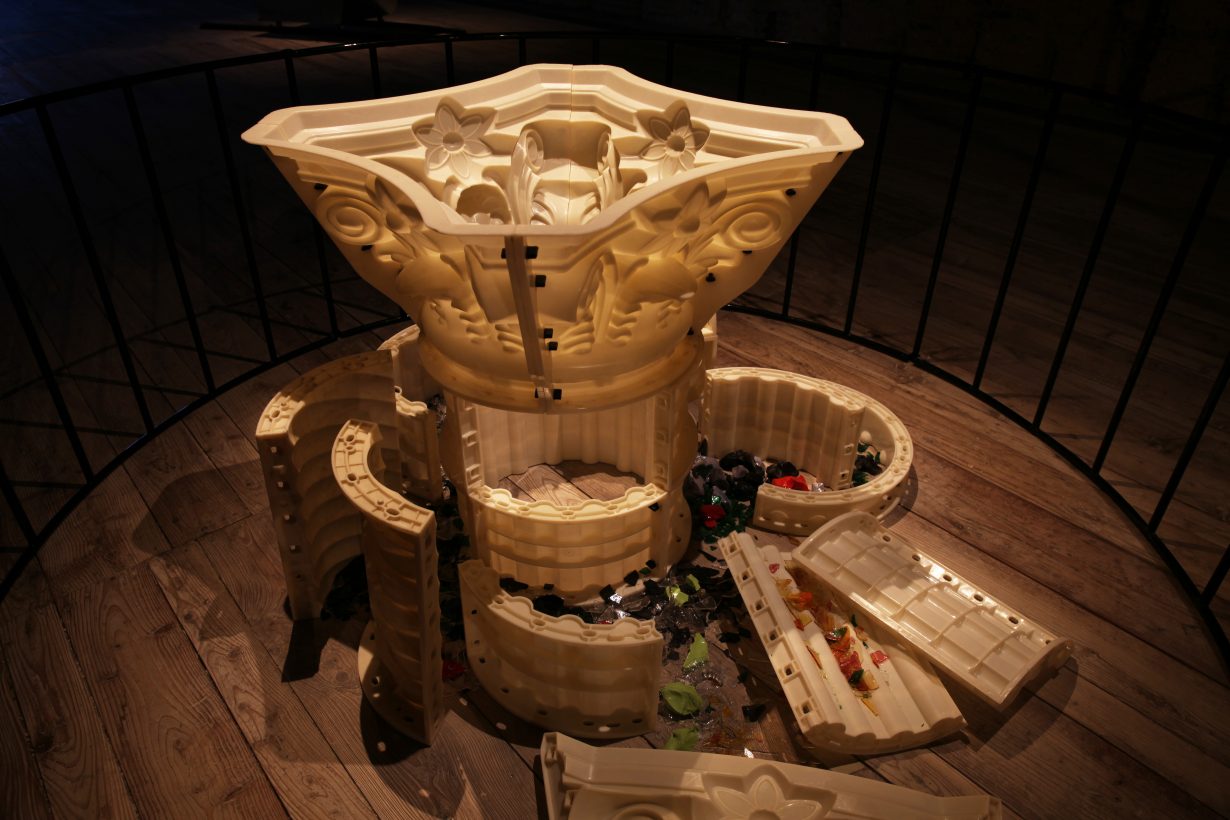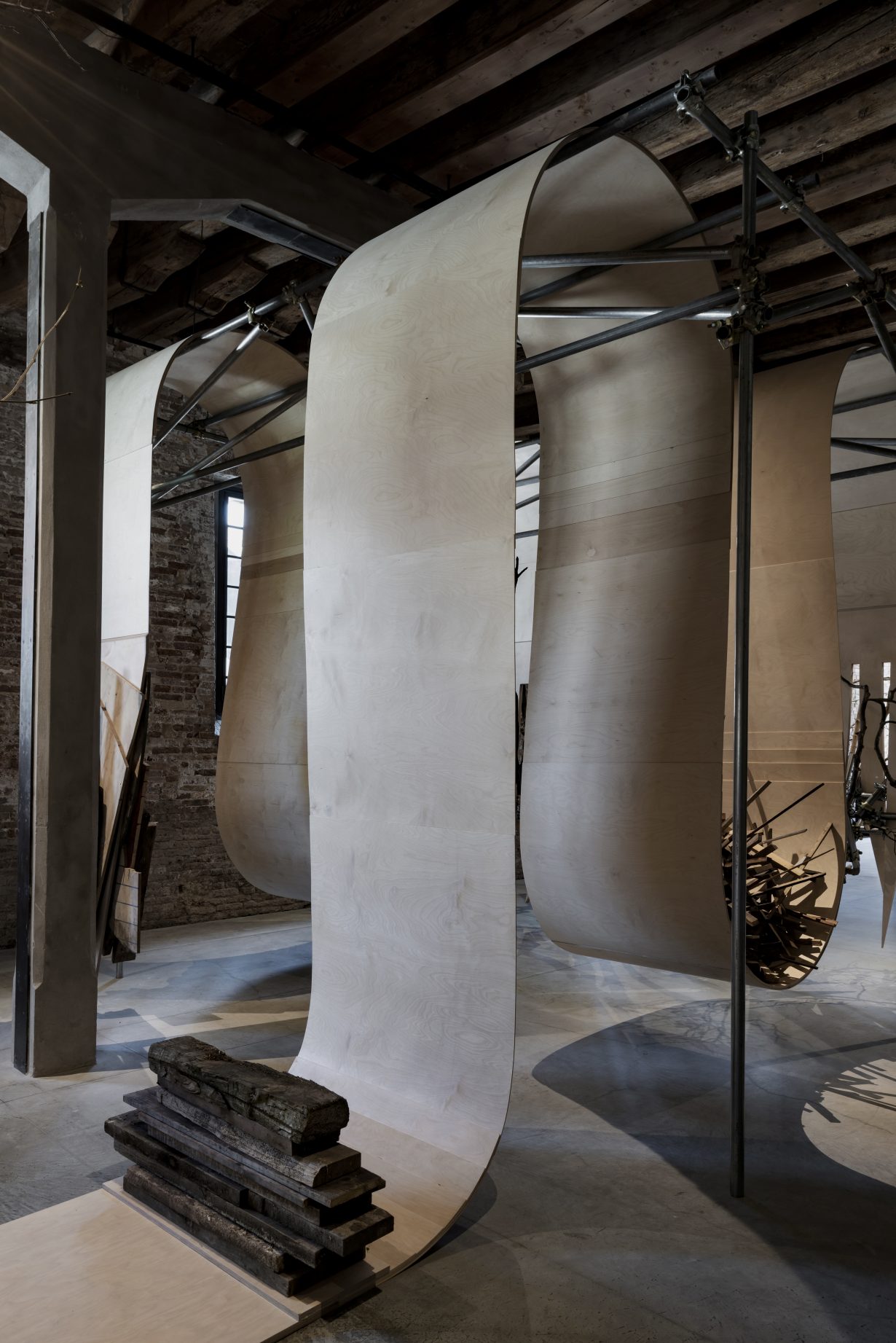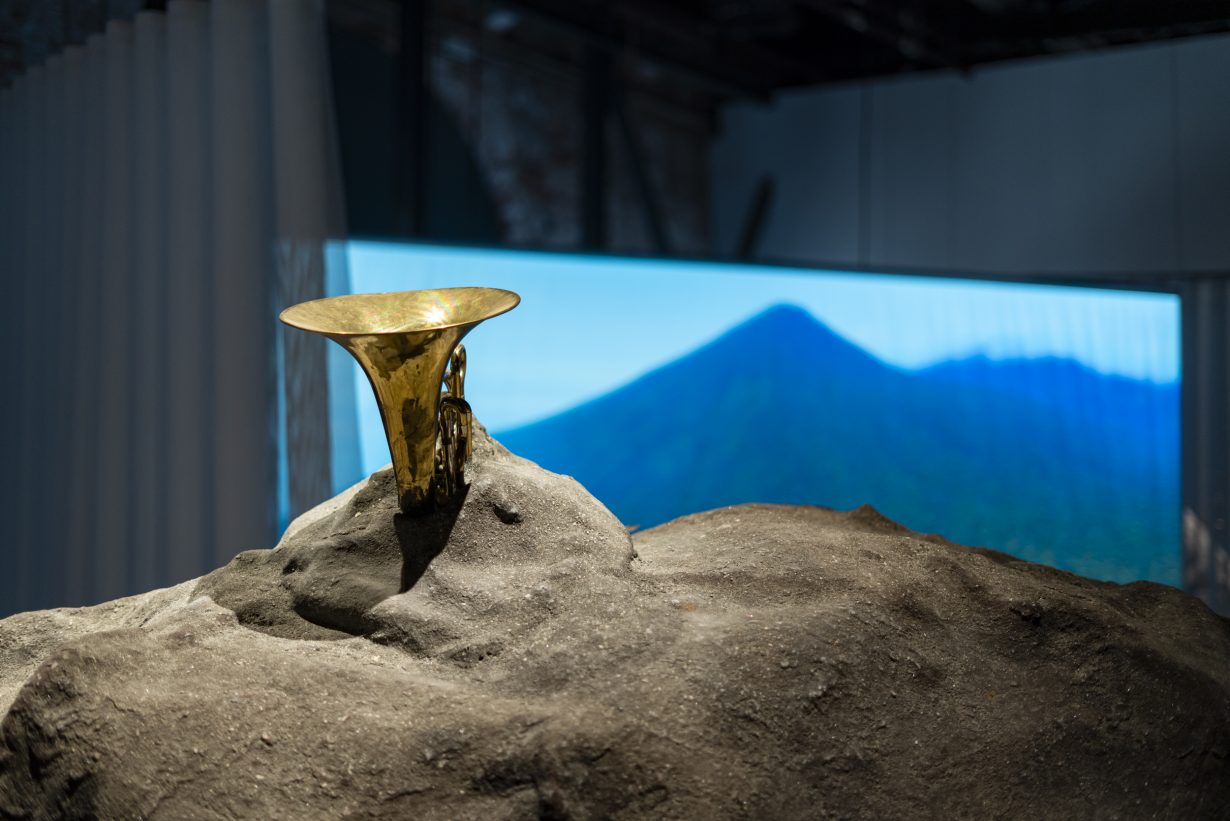The Benin, Türkiye, Argentina and Philippines pavilions – reviewed
The 60th Venice Biennale, Foreigners Everywhere, is in essence focused on migration and decolonisation, privileging, as curator Adriano Pedrosa said in his statement, ‘artists who are themselves foreigners, immigrants, expatriates, diasporic, émigrés, exiled, or refugees’; where, then, does that leave the pavilion system, structurally, visually and, well, existentially tied to land, nation and state? It’s quite the gauntlet to lay down.
Off the back of its president’s $2.1bn investment in tourism, arts and heritage, the Republic of Benin makes its debut at the Biennale, with its Pavilion, Everything Precious is Fragile, presenting the work of four artists drawing from the Yoruba Gèlèdè philosophy that celebrates ‘rematriation’, a feminist interpretation of restitution, and a broader consideration, respect and harmony that predate the colonial era. Much of Benin’s mention in the eurocentric artworld has been swept up in restitution campaigns, each day recirculating fresh reminders of the brutalisation and pillage the nation has suffered under colonial powers. So walking into the pavilion, we are faced with Romuald Hazoumè’s sculptural dome made not from bricks but plastic petrol tanks, blackened, muddied and dimly lit – then forced to bow our heads to step through the small arch entrance, cocooned in this foetal dusk and sung to by a choral soundtrack. Remnants of small bead-strings wrapped around occasional tank handles ask us not what is here, but who was here; the upright can lids look like faces, hundreds of which stare inward at you. Across the space, Chloe Quenum has crafted a largescale window-frame with verre Colonial, a type of glass commonly used in the colonial era, and hangs before it a series of glass sculptures. Seen through the window, these musical instruments, models, utensils and other forms look like tricks of the light in the blurry imperial glass, an unknown world beyond. But when we round the window to the side of the sculptures, we see that it stands before and almost entirely in mimicary of the Arsenale’s own window. The baying artworld crowds amble, photograph and pontificate outside.


The city they walk around is famously ornate, a historically imperial and hegemonic power-centre designed with the architecture to show it, and in many ways maintain what’s left of the might as the nature of that power evolves. Gülsün Karamustafa’s Türkiye Pavilion, Hollow and Broken, looks to address this aesthetic artifice in her sculptures, tall columns like those supporting the archways and friezes of imperial architecture – though here, they are made of hollow moulds, not limestone or marble but a creme-coloured plastic, a stack of containers pinned together to support nothing. Red metal frames circle the base of them, then rise conically inwards to the top of each pillar like a corset. Across the space, another pillar, perhaps half a metre tall with a capital standing dramatically atop it and shards of smashed emerald glass collected on the floor, is guarded by a black, metre-tall ring fence. In this pet-pen, Karamustafa’s sculptures are less iconoclastic per se, but more infantilising, making these ‘Monuments of unageing intellect’ (as W.B. Yeats famously wrote in ‘Sailing to Byzantium’, 1927) portable, modular and hollow. Venice and Istanbul, and Constantinople before it, are umbilically tied in their histories of commerce, trade and cultural exchange. Souring this impact is the knowledge that the Pavilion’s initial curator, Esra Sarıgedik Öktem, resigned in August last year in the wake of controversy and concerns of transparency and cultural meritocracy surrounding the upcoming Istanbul Biennial, which caused a wide boycott of IKSV, who also organises the country’s Pavilion. Behind Karamustafa’s hollow monuments lies the ghostly presence of the remaining political ones.

Luciana Lamothe’s installation for the Argentina Pavilion, Ojala se derrumben las puertas (I hope the doors collapse), is also concerned with a material enactment or manifestation of the forces that drive our world. Throughout the space, large undulating planks of wood work their way around the space, rising to the ceiling, looping back and falling, then extending along the floor as if spooling out of a cassette tape. In places, the boards hold charred and blackened wintry branches between splintered gaps; in others, Merzbau-like assortments of colour-painted wood are nailed erratically in place; troughs in the oscillating planks hold piles of sand with thin strips of timber stabbed into them. Each of these visual instances feels violent, as if the explosive arrangements of a Cornelia Parker installation were condensed into each, magnetically sucked to place along the woodboard path like a visual timeline. Further down the room, two videoworks are projected onto a stretch of the installation: one is a supercut of people snapping wooden planks in a variety of inventive and often comical ways; the other is a clipped loop of a person’s hand, palm-up in a small divot of mud, the frame cut mid-forearm, clasping and relaxing their fist. There’s perhaps two ways to look at this: there’s something aesthetically enthralling about Lamothe’s symbiosis of shape and destruction – and with it, formalism and deconstruction – that captures how our contemporary experience, of forever wars and climate breakdown, feels; there is also, though, something evasive about its vagueness – as if all this were just a disembodied and decontextualised experience of shape and form. Perhaps that hand in the video isn’t so much clenching, but searching for something to hold onto.

Mark Salvatus’s Philippines Pavilion, Sa kabila ng tabing lamang sa panahong ito / Waiting just behind the curtain of this age, might initially leave you grasping, too. Once you’ve finally made sense of the exhibition text (if you’re that type of gallery-goer), you, more purposefully, meander through a series of translucent curtains into the centre of the space, a clearing of sorts in which a film shows a series of musicians traversing the forested foothills of Mount Banahaw, an active volcano in the Philippines. Wide shots ingratiate us to the sublime landscape and secretive corners of undergrowth alike, the camera tracking toward the mountain with epic scale or the frame obscured by out-of-focus leaves or branches. One musician is lying on a moss-bed with a trumpet pressed to his chest; in a later shot, his instrument pokes out from behind a tree, and then back again, like a coy creature. In the room, we hear stabs of trumpet notes, played occasionally between piano-like notes, whispers and pops that come from speakers installed disorientingly around the space. Once in a while, a thunderous boom shakes the space, like thunder cracking or the volcanic cap being disturbed. Behind the dainty curtains a series of fibreglass boulders are plonked on the ground with trumpets protruding from their surface, as if wedged into concrete before it had set. It’s all a little bizarre, each work and sound a series of perspective-shifts or wrong-footings. The title is taken from the founder of a religious group who led a resistance movement against the Spanish Catholic church during the Spanish rule. And so we have these trumpets, musical instruments with their dichotomic histories as tools in communication for revolutionaries fighting against colonialism, and the inescapable historical background of the trumpet’s tone as pronouncements by colonial military regalia. Past and present, land and state, nature and human; confused, intertwined.
